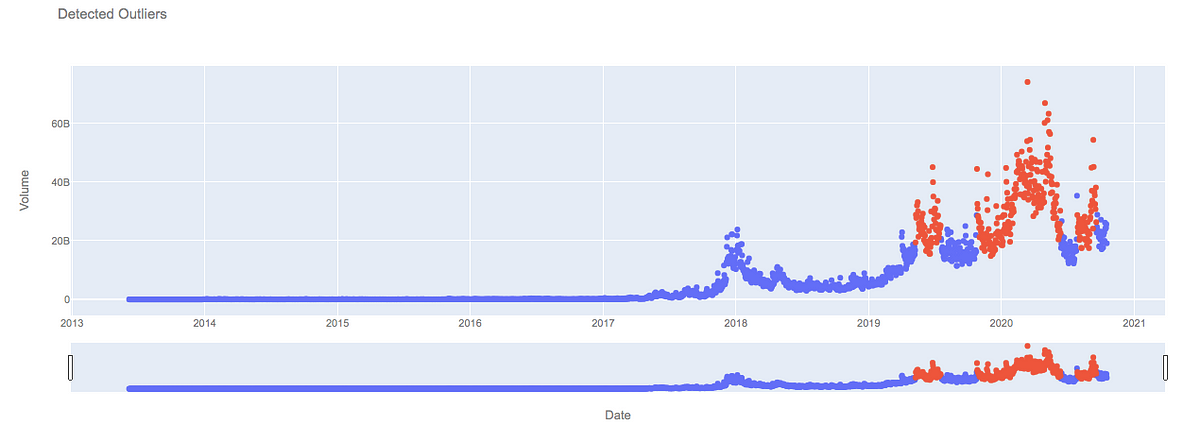Note from Towards Data Science’s editors:_ While we allow independent authors to publish articles in accordance with our rules and guidelines, we do not endorse each author’s contribution. You should not rely on an author’s works without seeking professional advice. See our Reader Terms for details._
TL DR: Historic-Crypto Package, Code.
What are Anomalies?
Anomalies, often referred to as outliers, are data points, data sequences or patterns in data which do not conform to the overarching behaviour of the data series. As such, anomaly detection is the task of detecting data points or sequences which don’t conform to patterns present in the broader data.
The effective detection and removal of anomalous data can provide highly useful insights across a number of business functions, such as detecting broken links embedded within a website, spikes in internet traffic, or dramatic changes in stock prices. Flagging these phenomena as outliers, or enacting a pre-planned response can save businesses both time and money.
Types of Anomalies?
Anomalous data can typically be separated into three distinct categories, Additive Outliers, Temporal Changes, or Level Shifts.
**_Additive Outliers _**are characterised by sudden large increases or decreases in value, which can be driven by exogenous or endogenous factors. Examples of additive outliers could be a large increase in website traffic due to an appearance on television (exogenous), or a short-term increase in stock trading volume due to strong quarterly performance (endogenous).
**_Temporal Changes _**are characterised by a short sequence which doesn’t conform to the broader trend in the data. For example, if a website server crashes, the volume of website traffic will drop to zero for a sequence of datapoints, until the server is rebooted, at which point normal traffic will return.
**_Level Shifts _**are a common phenomena in commodity markets, as high demand for electricity is inherently linked to inclement weather conditions. As such, a ‘level shift’ can be observed between the price of electricity in summer and winter, owing to weather driven changes in demand profiles and renewable energy generation profiles.
#cryptocurrency #classification-models #deep-learning #machine-learning #data-science
